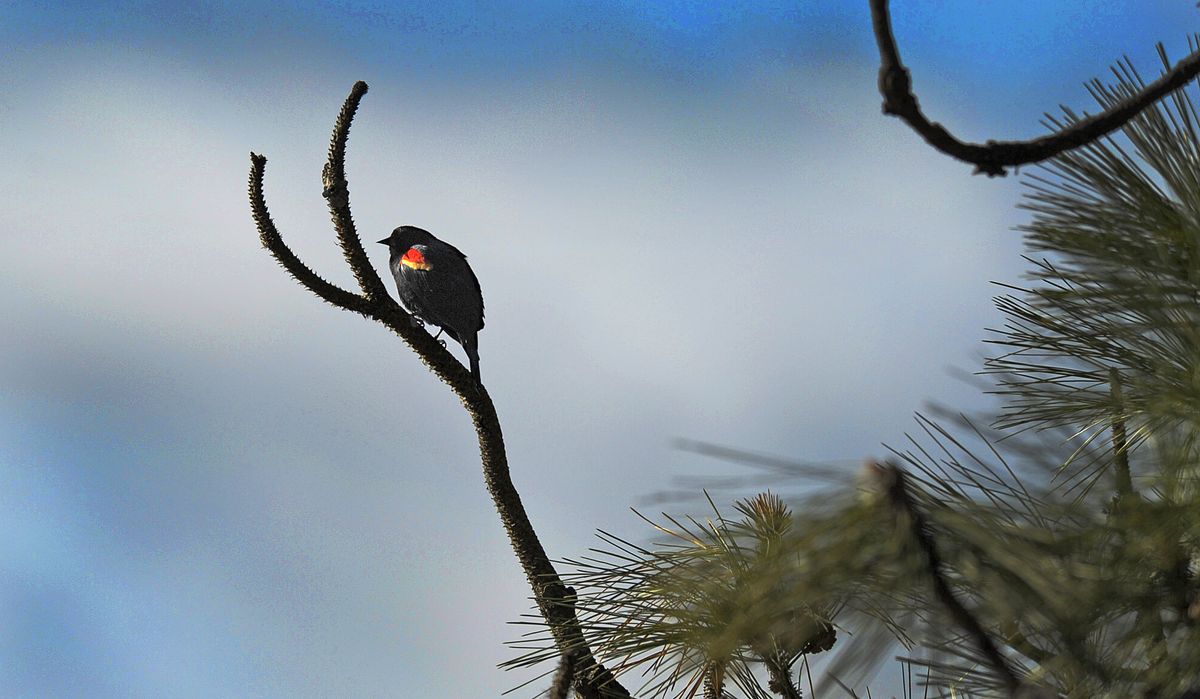Birds staking claims on prime Turnbull territory

At the edge of Winslow Pond, Mike Rule identified bird chatter rising from one of Turnbull National Wildlife Refuge’s many wetlands.
A female mallard quacked garrulously, while red-winged blackbirds vocalized with raspy trills. In the background, a common snipe was calling.
Dozens of bird species are arriving at the 16,000-acre refuge south of Cheney, said Rule, the refuge’s wildlife biologist. They’re vying for waterfront real estate in the refuge’s marshes and wetlands – trying to secure the best spots for feeding, breeding and nesting.
The fight over territory seldom comes to outright physical contact, but plenty of threats are exchanged through showy flashes of wings and seemingly melodic runs of birdsong. The action has a blunt message: Stay off my turf.
“It’s kind of a combat zone here in the spring,” Rule said. “They’re partitioning up the habitat.”
Spring is one of the best times to watch birds at the refuge, which protects ponds and wetlands created 15,000 years ago during the Missoula Floods. The flood left depressions in the landscape, which later filled with ash from volcanic eruptions in the Cascade Mountains. The ash created watertight seals that retain water.
More than 200 bird species flock to the refuge, where wetlands and ponds provide high-protein snacks in the form of aquatic invertebrates. The bugs also provide calcium and fat needed by females about to lay eggs, Rule said. Dragonfly, damselfly and mayfly larvae are among the pickings, along with diving beetles and water fleas.
Temporary wetlands – called “vernal pools” – also contain short-lived fairy and tadpole shrimp. The shrimp lay eggs that will hatch next spring, when the hollows refill with water.
Since the winter was so mild, waterfowl are arriving at the refuge in a steady trickle this spring, instead of the great flocks that typically follow a harsh winter, Rule said. Some species, such as tundra swans, use the refuge as a stopover en route to nesting grounds in Canada and Alaska. Others stay and raise their young here.
As the numbers of birds increase, conflicts intensify. On Tuesday, a trumpeter swan chased a pair of Canada geese out of a pond. Red-winged blackbirds perched on cattails along the water, but they’ll soon be displaced by the larger, yellow-headed blackbirds that claim the best feeding spots.
Three mallards together is a sure sign of conflict, Rule said: An unattached male is trying to intrude on a pair’s established territory.
Some mallards are already nesting on the refuge. Those ducks arrived early to stake out good sites, Rule said. Mallards like to hide their nests in brush away from the water, but they need to be close to shallow ponds for feeding and deeper ponds where their ducklings can learn to swim.